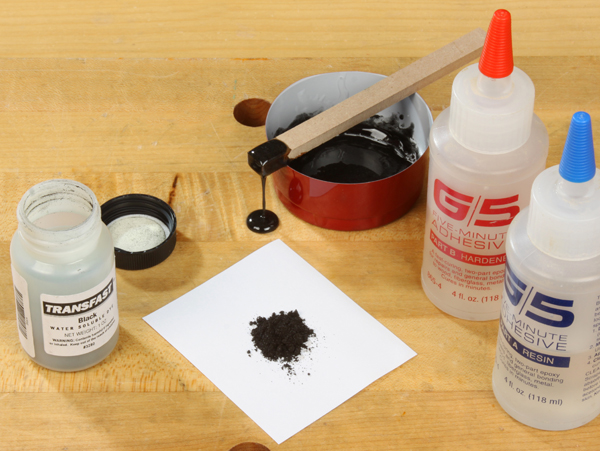
I am attempting to make a cookie tin banjo. For the neck blank, I will use 4 pieces of 1″ X 4″ red oak laminated face to face to get the width I need for the string head and the depth I need for the heel. I know that red oak is not the preferred wood, but it is readily available at home centers and should provide a relatively stable neck once glued up and shaped. The problem is: I would like to color the glue that I use to laminate the wood but don’t want the color to penetrate deeply into the wood. I would like the glue to be a dark blue to match the color of the cookie tin. The effect I am looking for is a fine, almost unnoticeable, blue line where the wood is cut perpendicular to the glue joint, but on the sides of the neck where it curves I want a wider line that fades out as the neck radiuses back to perpendicular to the glue joint. My questions are: 1. What can I use to get the dark blue without deeply penetrating the red oak? 2. Other than the standard prep when laminating wood, is there something else I need to do like sealing the wood prior to the glue-up? Again I want a strong bond without deep color penetration. – David Maddox
Rob Johnstone: David, To achieve the effect you are looking for, I would not use a colored glue. I do not believe it would work…even a little. I would use a light-colored wood veneer — like a birch or maple — and I would dye it blue (dye, not stain). (With luck, the dye will penetrate sufficiently to color the veneer through and through … more on that later.) Allow the dyed veneer to dry completely. Then glue the neck together with the veneer between the red oak pieces. You can laminate dyed wood as if it is raw wood.
If the dye did not penetrate the veneer sufficiently, you will need to do a bit more putsy work — made even putsier by your choice of red oak. Shape the neck as you wish it to be. Then mask off the thin strips of the dyed veneer edges. Apply a sealer coat of thinned shellac to the red oak. Peal off the mask from the veneer and then apply more dye to the edges. Do your best to keep it away from the oak. Allow it to dry and then finish as you wish.





